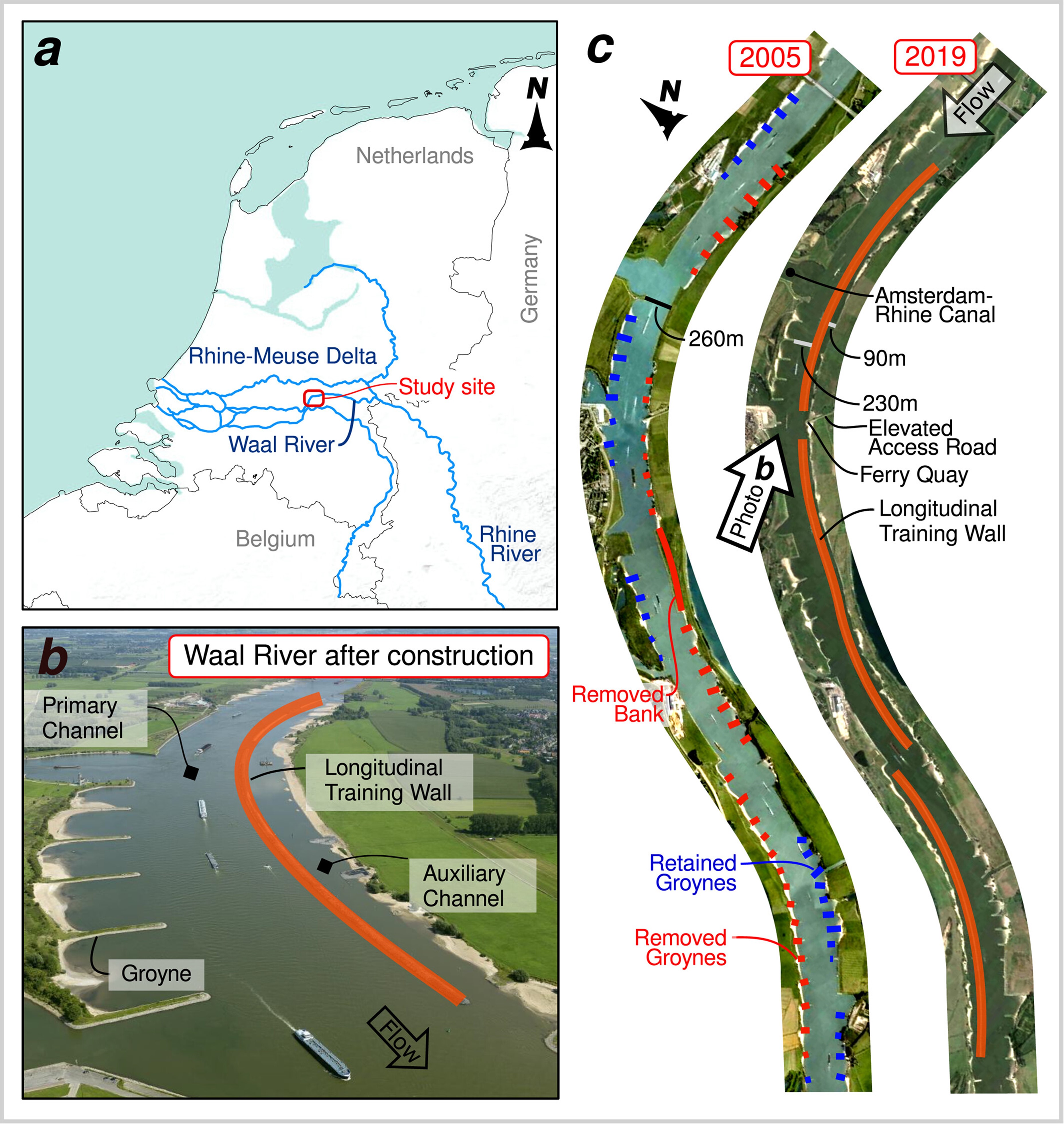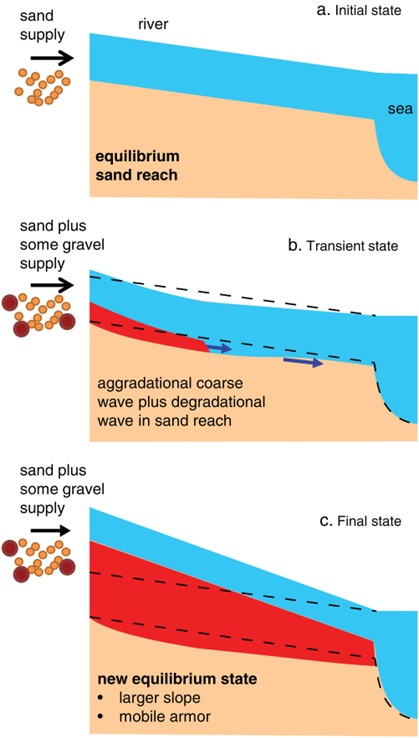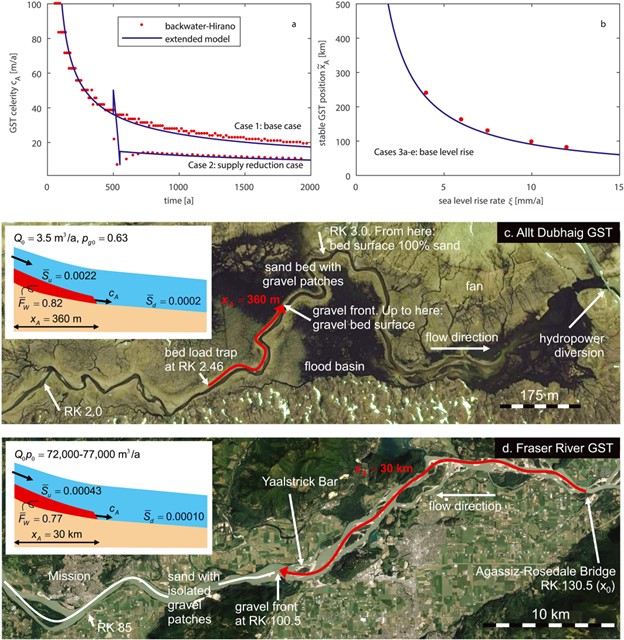Sediment connectivity and management
THE PROBLEM
The riverine transport of sediment is the primary agent of landscape evolution in both natural and managed river systems. In non-engineered environments, fluxes of water and sediment set rates of river channel migration through the erosion and construction of land. In engineered environments, landscape managers must contend with alternations to sediment flux that have the potential to alter morphodynamic processes and rates, thus threatening infrastructure and population centres. In both types of environments, the transport of sediment is a major pathway by which nutrients, contaminants, and plastics are distributed by river systems across and between environments across Earth’s surface. As such, understanding the drivers of sediment flux and the means by which sediment is exchanged both within and between fluvial environments is of central importance to the engineering, conservation, and management of river systems.
WHAT WE DO
Our Sediment Connectivity and Management Lab at the Department of Hydraulic Engineering has built up a wide range of expertise with regards to both understanding the mechanics of sediment transport, its influence on the morphology and dynamics of river systems, as well as technological approaches for monitoring and managing the conveyance of sediment by engineered river systems. We combine laboratory, modelling, and field-based investigations into sediment transporting processes to provide insights into the governing mechanisms of fluvial morphology and processes, such as the dynamics of gravel-sand transitions, the morphodynamics of river systems with mixed-size sediment, the transport of plastic grains in river channels, the evaluation of different engineering approaches to manage channel bed incision, and the evolution of the longitudinal profile of engineered river systems.
Through ongoing partnerships and collaborations with agencies and stakeholders, we combine multi-decadal to centennial durations of monitoring of engineered river systems with numerical modelling approaches to evaluate future geomorphic risk and assess the viability of engineering approaches to manage engineered river systems. Previous studies analysing data collected over the last 150 years of the Rhine branches give insight into the effects of engineering modifications to river channels, such as groynes and longitudinal training walls, on long-term changes to the channel’s morphology through their influence on the channel’s sediment transport capacity. We have explored various approaches to mitigating channel bed incision through sediment nourishment of the river channels, as well as further engineering modification of the channel through longitudinal training walls.
CURIOUS TO KNOW MORE ABOUT SEDIMENT CONNECTIVITY AND MANGEMENT?
The understanding of the movement of sediment and its exchange within and between fluvial systems is a complex and fundamental challenge for both building scientific understanding of processes that shape fluvial environments, as well as the engineering and management of these systems. Sediment connectivity and management research is carried out by BSc students, MSc students, PhD students, and postdocs. The types of projects vary from theory-driven to application-driven.
ONGOING PROJECTS
- Rivers2Morrow PhD research project Eki Liptiay
- Water2015 postdoctoral research Matt Czapiga
- PhD research project Chit Yan Toe
- Rivers2Morrow PhD research project Kifayath Chowdhury
- Rivers2Morrow PhD research project Clàudia Ylla Arbós




